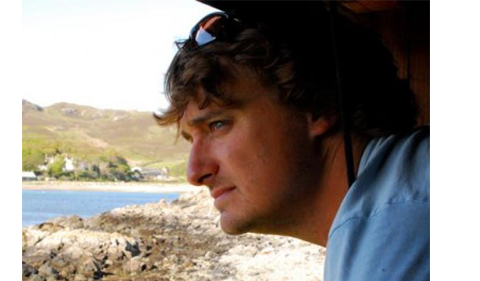
Ryan Thigpen
The Geological Sciences Colloquium series presents Dr. Ryan Thigpen discussing “Cataclysmic collapse of mountain topography along the Yellowstone hotspot track” on Friday, March 6, at 2 p.m. in Clippinger 205.
Thigpen is an Assistant Professor at the University of Kentucky in the Department of Earth and Environmental Sciences.
Abstract: Removal of mountain topography such as the Teton Range is classically attributed to surface processes such as river and glacial erosion and land sliding and because of this, complete removal of old mountain belts like the Appalachians usually takes >10-100 million years or more. However, in southern Idaho and northwest Wyoming, the low-relief track of the Yellowstone hotspot apparently ‘truncates’ multiple high-relief mountain ranges and the active normal faults that produced them. This talk will explore the idea that migration of the Yellowstone hotspot across Idaho and into Wyoming has ‘erased’ the continental topographic divide that otherwise extends from northern Mexico to Canada. In this scenario, major mountain belts would be completely and cataclysmically removed in <2 Myr based on hotspot migration rates, making this the fastest topography removal mechanism in the world.
In the case of the Teton Range, multiple emerging datasets obtained by our group over the last three summers indicate that the active Teton fault extends much further north than the topographic expression of the present-day range. This data includes new surface and lake floor imaging and comprehensive uplift studies that supports a northern extension of the Teton fault. In this scenario, the paleo-Teton fault is interpreted to have originally been much longer (140-200 km v. 60 km), extending across the modern-day Yellowstone hotspot track, and the northern half of the mountain range which was composed of 600-1600 km3 of rock was ‘obliterated’ by multiple supercaldera eruptions over the last 2 million years. Despite removal of the footwall topography in the area encompassing Yellowstone National Park, the active fault that produced the Teton Range may remain active well into the modern-day Yellowstone caldera, and thus may represent a major unrealized seismic hazard.
Upcoming Colloquia
Andrew Schedl of West Virginia State University on “The Jeptha Knob Structure: How meteorite impact driven dolomitization hid the evidence for Jeptha Knob’s origin” on March 27 at 2 p.m. in Clippinger 205.
Katherine Fornash of Ohio University Geological Sciences on “Petrogenesis and Significance of Lawsonite-bearing Hybrid Rocks” on April 3 at 2 p.m. in Clippinger 205.



















Comments